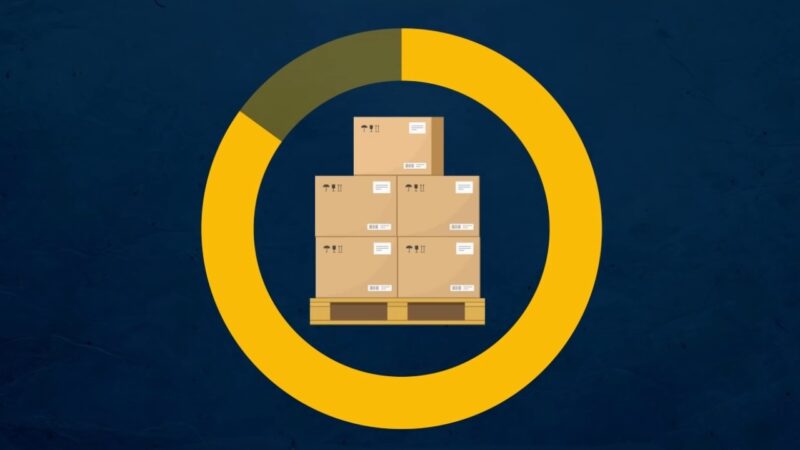The ‘In Transit’ status in shipping is a critical update, indicating that your package is en route to its final destination. This phase begins once the package leaves the warehouse or shipping facility and continues until it arrives at the delivery point.
While ‘In Transit’ means your item is moving, it does not offer specific location details or an exact arrival time. The status is commonly updated when the package reaches and departs from various carrier facilities, ensuring customers that their shipment is actively underway. Understanding this term is key to interpreting the progress of your delivery.
Tracking Your Package in Real-Time
![]()
Real-time tracking is a valuable tool for monitoring your package’s journey. This service, provided by most shipping carriers, allows you to see up-to-date information about your package’s whereabouts. By entering the tracking number on the carrier’s website or app, you can access the latest status updates, including the package’s current location and anticipated next steps.
Advanced tracking features might even offer a map view or detailed transit logs, showing each stage of the journey. This feature not only helps in estimating the arrival time but also keeps you informed about any changes or delays in the delivery process.
Understanding the Different Stages of Transit
A package in-transit undergoes multiple stages, each representing a crucial step in its journey. These stages typically include collection from the sender, sorting at a local facility, transportation to regional or national sorting centers, and final delivery preparation.
At each stage, the package might be handled by different teams and transported via various modes like trucks, planes, or trains. Knowing these stages helps demystify the process, giving you a clearer picture of where your package is and what happens at each transit point.
Estimated Delivery Dates and How to Interpret Them
Carriers provide estimated delivery dates to give customers an idea of when their packages might arrive. These dates are calculated based on several factors, including the shipping method, distance between origin and destination, and the carrier’s network capabilities.
While these estimates are usually accurate, they are subject to change due to unexpected circumstances such as logistical challenges or external factors. Regularly checking your tracking information is crucial to stay updated, as carriers often adjust these estimates based on real-time transit progress.
Common Reasons for Delays in Transit

Delays in transit are not uncommon and can be caused by a variety of factors. Adverse weather conditions, such as storms or extreme temperatures, can impede transportation routes. During international shipping, packages may be held up in customs, undergoing necessary but sometimes lengthy inspections.
Peak shipping seasons, like holidays, often lead to high package volumes, which can overwhelm carrier systems and cause delays. Additionally, internal issues like sorting errors or transportation disruptions can also affect transit times. Being aware of these potential causes helps in understanding and managing your expectations during the shipping process.
How to Contact the Shipping Carrier for Updates
If you require more detailed information about your package’s status, contacting the shipping carrier directly is advisable. Most carriers offer several contact methods, including customer service hotlines, email support, and online chat features.
When reaching out, ensure you have your tracking number at hand to receive specific and accurate updates about your package. Customer service representatives can often provide insights into any delays, and estimated time of arrival adjustments, or offer solutions if there are issues with your shipment.
Tips for Ensuring a Smooth Transit Experience
A smooth transit experience largely depends on your choices and actions before and during the shipping process. Selecting a reputable carrier with a proven track record of reliability and customer service is crucial.
Accurately labeling your package, including clear and correct address details, significantly reduces the risk of misrouting or delays. Opting for shipping insurance or additional tracking services can provide peace of mind and extra security for your shipment. Staying informed about the transit process and keeping an eye on tracking updates allows you to anticipate and react promptly to any changes or issues.
Dealing with Lost or Stuck Packages in Transit
Encountering a lost or stalled package can be frustrating, but there are steps you can take to resolve the situation. If your tracking information hasn’t been updated for an unusually long time, or if your package seems to be stuck at a certain point, the first step is to contact the carrier.
Provide them with your tracking number and any relevant details to initiate an investigation. In many cases, carriers can locate and get the package moving again. If the package is deemed lost, you may be eligible for compensation, especially if you opted for insurance. Understanding the carrier’s policies on lost or delayed packages beforehand can be beneficial.
International Shipping and ‘In Transit’ Status
International shipping adds complexity to the ‘In Transit’ status. When a package crosses borders, it goes through customs, which can add time and uncertainty to the delivery process. Tracking updates might be less frequent during this stage.
It’s also crucial to be aware of any additional fees or duties that may be required upon the package’s arrival in the destination country. Familiarizing yourself with the specific customs processes and regulations of the destination country can help you better understand and navigate the international shipping journey.
Package Security During Transit
The security of your package is a primary concern during transit. Carriers employ various measures to ensure packages are protected from theft, damage, or loss. These include secure transportation methods, monitoring systems, and rigorous handling procedures.
As a customer, you can contribute to your package’s security by choosing sturdy packaging materials, sealing the package properly, and opting for services like signature confirmation upon delivery. Being proactive about security can significantly minimize risks associated with package transit.
How Weather Conditions Can Affect Your Shipment

Weather conditions play a significant role in the shipping process. Severe weather like storms, heavy snow, or extreme temperatures can lead to delays or rerouting of shipments.
Carriers monitor weather forecasts closely and often have contingency plans for such scenarios, but some delays are inevitable. Being aware of weather conditions along your package’s route can help you understand potential delays and set realistic expectations about delivery times.
Final Thoughts on Navigating Your Package’s Journey
Navigating your package’s journey requires a blend of understanding the shipping process, staying informed, and proactive communication. ‘In Transit’ status is a key update in this journey, providing assurance that your package is on its way.
By utilizing tracking tools, understanding potential delays, and communicating effectively with your carrier, you can navigate this process with greater ease and confidence. Remember, most packages reach their destinations successfully, and being informed and prepared can make your shipping experience much smoother.







